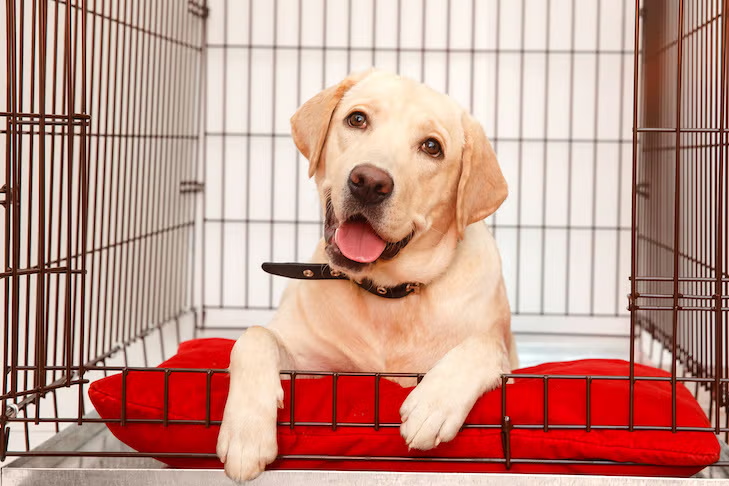Crate training is a valuable skill for dogs and owners alike. It can simplify housebreaking, create a safe space for your pup, and offer a structured routine that supports good behavior. But here’s something many pet parents overlook: not all breeds respond to crate training in the same way. In fact, some dogs are more naturally inclined to settle in a crate, while others may find it challenging — or even frustrating — depending on their temperament, energy levels, and instincts.
Not All Dogs Are Created Equal — Especially When It Comes to Crating
Different breeds come with different behavioral traits. Some are naturally independent, others highly social. Some are born snugglers, while others need wide open spaces and constant stimulation. When it comes to crate training, these traits play a major role in determining how easily a dog adapts.
According to many professional trainers, the following categories can help you understand your dog’s relationship with crates:
- Calm, independent breeds (like Greyhounds or Bulldogs) often do well in crates and appreciate having their own quiet space.
- Highly social or anxious breeds (like Labradors, Vizslas, or Spaniels) may struggle more with crate time, especially if left alone for long periods.
- Working and herding breeds (such as German Shepherds, Border Collies, or Malinois) need mental stimulation and are more prone to frustration if crated too long without activity.
- Toy breeds (like Yorkies or Chihuahuas) may need extra reassurance and padding, as they’re more sensitive to noise and physical discomfort.
Knowing your dog’s tendencies allows you to select a crate that minimizes stress and supports good behavior. And that’s where design — not just training — becomes essential.
Why Crate Design and Quality Matter
Some dogs naturally settle into a crate, others test boundaries. For energetic or anxious breeds, standard wire or plastic crates may not hold up — and worse, they might cause stress, injury, or escape.
That’s why investing in a thoughtfully designed, heavy-duty crate can change the game.
Impact Dog Crates, for example, are known for their durable construction, escape-proof features, and comfort-driven design. These crates are built with precision — using strong aluminum, reinforced doors, and ventilation patterns that keep dogs cool and calm. They’re ideal for dogs that tend to chew, scratch, or push their way out of flimsier options.
For owners of high-drive breeds or large, powerful dogs, this type of build quality isn’t a luxury — it’s a necessity.
Matching the Crate to Your Dog’s Personality
While breed tendencies are useful, every dog is an individual. Some Huskies are calm. Some Golden Retrievers hate being alone. When choosing a crate, consider:
- Your dog’s energy level: Active breeds need a sturdy crate with proper ventilation to avoid overheating during downtime.
- Separation anxiety: Dogs prone to anxiety often feel more comfortable in secure, enclosed spaces that reduce stimulation.
- Escape behavior: If your dog has ever broken out of a crate, a high-security option like Impact Dog Crates can offer the peace of mind you need.
Dogs that feel secure in their crate are more likely to relax, sleep, and see it as a positive place — not a punishment.
Crate Training Tips for Different Breeds
Regardless of the crate you choose, training technique matters. Here are some breed-specific insights:
- For intelligent, active breeds (like Border Collies or Australian Shepherds): Make crate time part of a structured day that includes plenty of exercise and problem-solving games.
- For nervous or sensitive breeds (like Whippets or Italian Greyhounds): Focus on positive reinforcement. Feed meals in the crate and reward calm behavior.
- For large, strong dogs (like Rottweilers or Dobermans): Choose a crate that can handle pressure and movement. Consistency in training is key.
- For lapdogs (like Pomeranians or Shih Tzus): Keep the crate cozy and located near human activity to avoid feelings of isolation.
It’s also important to gradually increase crate duration and never use it as punishment. With the right introduction, most dogs will grow to enjoy their crate time.
When Durability Becomes Essential
Some breeds simply need more durable gear. Dogs that dig, chew, or panic in crates are not misbehaving — they’re reacting out of instinct or anxiety. Unfortunately, this often results in destroyed crates or injured pets.
That’s why a crate from Impact Dog Crates is often a smart long-term investment. These crates are designed to withstand years of use, resist escapes, and support training without the wear-and-tear you’d expect from standard models. They also tend to hold their value longer, since they don’t degrade quickly with use.
Whether you have a high-energy working dog or a curious mixed-breed pup, a stable and secure crate helps build better habits.

